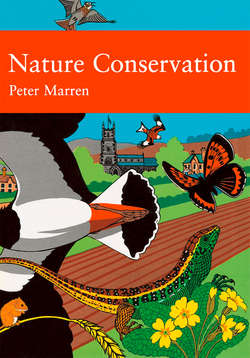Читать книгу Nature Conservation - Peter Marren - Страница 11
Site registers and monitoring schemes
ОглавлениеTo conserve species in a site-based system of nature conservation you need to link species to places. During the 1980s, the NCC embarked on a series of grand, nationwide habitat surveys, a kind of resource account of Britain’s wildlife. Cumulatively they produced a detailed documentation of Britain’s wild places as a factual basis for conservation decisions. The NCC drew on existing, scattered information, but the surveys also amounted to possibly the most ambitious programme of field survey there has ever been. First there were the habitat surveys: ancient woodland (‘the Ancient Woodland Inventories’), the coast (‘Sand-dune Survey’, ‘Estuaries Review’), peatlands (‘National Peatland Resource Inventory’) and rivers. Beyond the shoreline there was the Marine Conservation Review (q.v.), analogous to the Nature Conservation Review on land, which classifies maritime communities and documents the best sites. The Geological Conservation Review did the same for rock strata and special geological sites over 41 volumes. Then there were the species reviews. The Invertebrate Site Register documented the best sites of insects and other invertebrates. A Rare Plant Survey did the same for rare vascular plants. The long-running Seabirds at Sea project discovered where seabirds went and what they did once they were beyond the reach of land-based binoculars. These surveys formed a mass of raw material that could be tapped for SSSI notification, species protection, drawing up oil-spill contingency plans etc. The Geological and Marine Conservation Reviews were also major contributions to pure science. Most of this work remains unpublished, perhaps destined to remain forever in sagging, spiral-bound folders thronging the shelves of conservation offices or lodged somewhere in the labyrinth of cyberspace. It is almost unsung, this last, vast outpouring of British natural history. The NCC’s successor agencies continued some of it, and implemented smaller-scale surveys of their own, though generally for a particular, short-term purpose, but none of them had any interest in praising the work of their predecessor. All the same, it was a tremendous voyage of discovery with able captains. Those of its mariners that are not retired are now mostly in administrative conservation jobs, or working as consultants.
Recording rare flowers: Barbara Jones, a trained climber, surveying the Snowdon lily, Lloydia serotina, (below) on Snowdon.
There were also surveys that established a system of baseline monitoring to record how the natural world was changing. A basic ‘phase one’ survey that purported to map all Britain’s natural habitats started in the early 1980s, with the help of the county wildlife trusts. The NCC also started a National Countryside Monitoring Scheme, which compared present and past land use in selected parts of the countryside. A much finer tool for measuring change was handed to conservation workers with the publication, during the 1990s, of the five-volume British Plant Communities, compiled by John Rodwell of Lancaster University, the fruits of a 15-year project to classify all kinds of natural and semi-natural vegetation found in Britain. The vegetation of many SSSIs has been mapped using this National Vegetation Classification, thereby providing a baseline for monitoring change as well as for assessing how much of the different types of vegetation are on protected sites. The species that best lend themselves to detailed census work are birds and butterflies. Birds have long been monitored using the Common Bird Census (now the Breeding Bird Survey) organised by the British Trust for Ornithology (BTO), along with the regular counts of seabirds by the Seabird Group. The performance of rare birds is the responsibility of the Rare Breeding Birds Panel. For monitoring butterflies, a method was worked out in the 1970s by Ernest Pollard, which involved counting all the species seen along a regularly walked transect. The success of the scheme has meant that fluctuations in butterfly numbers can be recorded, as well as their distribution. Computer techniques have also made possible some novel ‘phenograms’ (see p. 28) combining numbers with dates of emergence. Further evidence of population changes in insects, especially moths, is provided by the ‘Rothamsted traps’ operated under standardised conditions across the country. There has also been a revival of phenology – timing the appearance of flowers or frog-spawn or migrant birds – in relation to climate change.
‘Abundance map’ of the kestrel from The New Atlas of Breeding Birds 1988-1991 showing relative numbers as well as distribution. (By permission, BTO)
